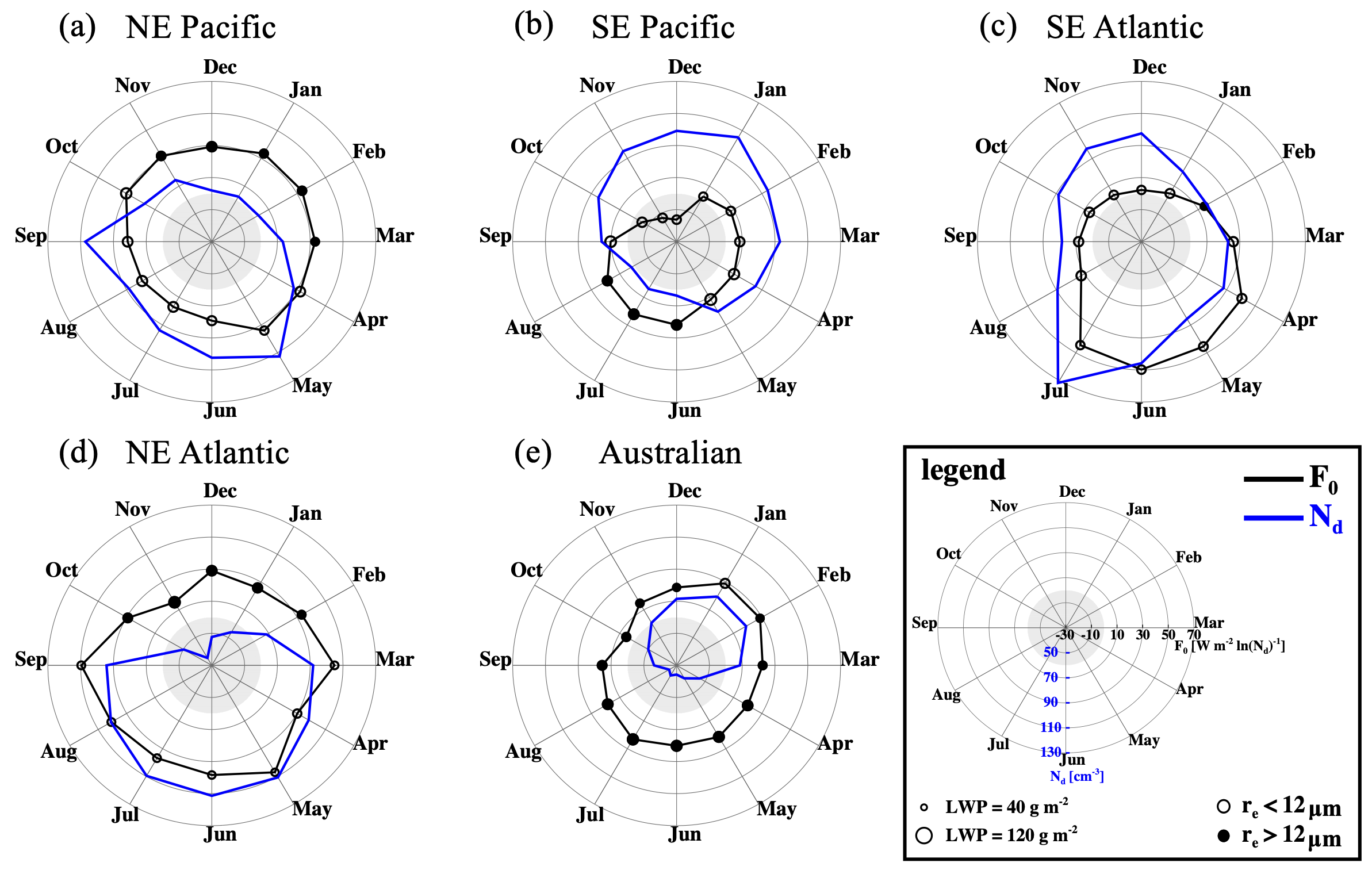Assessing marine warm cloud albedo susceptibility to aerosol perturbations
Submitter
Feingold, Graham — NOAA Earth System Research Laboratory
Zhang, Jianhao — NOAA Chemical Sciences Laboratory
Area of research
Cloud-Aerosol-Precipitation Interactions
Journal Reference
Science
The sensitivity of cloud brightness (ability to cool the Earth through reflecting sunlight) to the amount of aerosol (tiny particles in the atmosphere) in the marine boundary layer is quantified using spaceborne observations of clouds and radiation. When clouds are sorted by their amount of water condensate and number of droplets, cloud regimes emerge, distinguished by their potential to be brightened or darkened in response to an aerosol perturbation. We further demonstrate that the covariation among synoptic scale environmental conditions dictates how clouds populate each regime, leading to regionally distinct evolutions in cloud brightness sensitivity to aerosol changes.
Impact
Marine low-level liquid-form clouds cool the Earth effectively by reflecting a good fraction of sunlight that would otherwise be absorbed by the dark ocean. New insights provided by a bottom-up assessment of cloud albedo susceptibility based on satellite observations confront the long-standing impression that more aerosol leads to brighter clouds, the foundation of one of the proposed climate intervention approaches, namely Marine Cloud Brightening (MCB). We demonstrate that under certain meteorological conditions, especially under deep boundary layers and warm SST, clouds can be darkened due to loss of water condensate through enhanced droplet evaporation. Our work stresses the importance of accounting for meteorology-aerosol covariations when assessing the viability of MCB and scaling up local-to-global cloud radiative response to aerosol perturbations.
Summary
We use long-term CERES-MODIS observations of cloud and radiation, on board Terra and Aqua satellites, to quantify albedo susceptibility of marine low clouds to droplet number concentration (Nd) perturbations over global oceans, with a focus on subtropical stratocumulus decks. We find that when data are binned by LWP and Nd, clear state-dependent cloud susceptibility regimes (brightening versus darkening) emerge in a way that is consistent with physical mechanisms revealed by high-resolution process-modeling. These regimes include (i) thin non-precipitating clouds that exhibit brightening, where the Twomey effect is expected to dominate; (ii) thicker non-precipitating clouds that exhibit darkening, where microphysically driven entrainment feedbacks are expected to be the most active; and (iii) mostly precipitating clouds that exhibit brightening, consistent with the precipitation-suppression mechanism due to reduced drop sizes. We find that this regime manifestation in the LWP-Nd space is robust across different subtropical ocean basins where marine stratocumuli prevail and responds only weakly to the changing large-scale meteorological conditions. However, distinct regional covariations among large-scale meteorological conditions strongly control the density distribution within the LWP-Nd space, thereby leading to markedly different annual cycles in albedo susceptibility at each basin.



